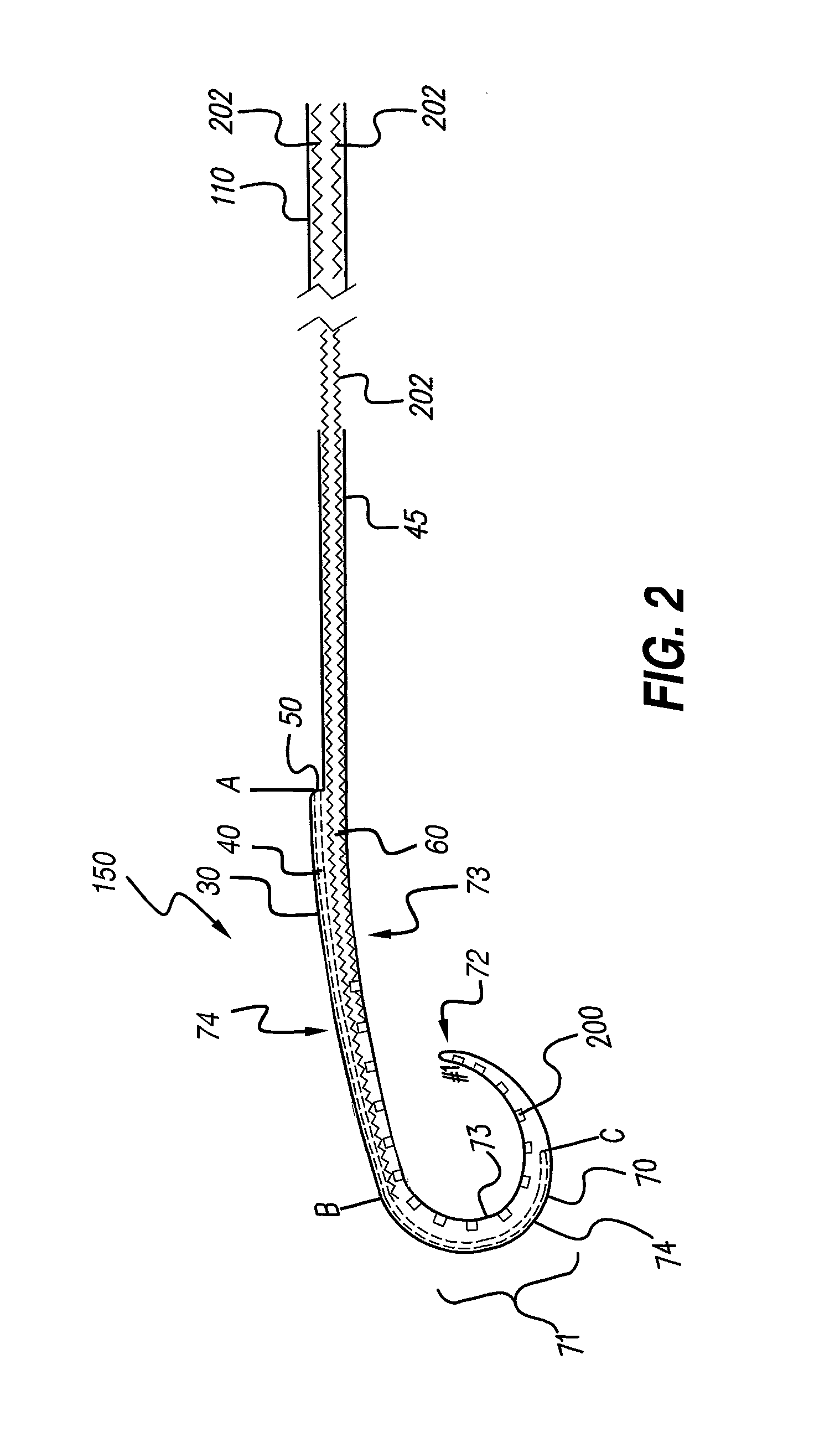Cochlear lead
a cochlea and electrode array technology, applied in the direction of head electrodes, internal electrodes, therapy, etc., can solve the problems of conductive hearing loss, impeded normal mechanical pathways for sound to reach the hair cells in the cochlea, and deafness sensorineural hearing loss
- Summary
- Abstract
- Description
- Claims
- Application Information
AI Technical Summary
Benefits of technology
Problems solved by technology
Method used
Image
Examples
Embodiment Construction
[0023]The following description is of the best mode presently contemplated for carrying out the invention. This description is not to be taken in a limiting sense, but is made merely for the purpose of describing the general principles of the invention. The scope of the invention should be determined with reference to the claims.
[0024]The cochlear lead of the present invention may be used with an implantable multi-channel pulse generator, e.g., an implantable cochlear stimulator (ICS) of the type disclosed in U.S. Pat. No. 5,603,726, incorporated herein by reference in its entirety or with other suitable stimulators.
[0025]FIG. 1 shows an embodiment of the lead 150, in accordance with the present invention. The electrode contacts 200 are spaced apart along the medial side of the lead, which side is on the inside of the curvature of the curved electrode array. In the lead embodiment shown, the electrode contacts in the electrode array are positioned “in-line” to the lead, meaning that...
PUM
 Login to View More
Login to View More Abstract
Description
Claims
Application Information
 Login to View More
Login to View More - R&D
- Intellectual Property
- Life Sciences
- Materials
- Tech Scout
- Unparalleled Data Quality
- Higher Quality Content
- 60% Fewer Hallucinations
Browse by: Latest US Patents, China's latest patents, Technical Efficacy Thesaurus, Application Domain, Technology Topic, Popular Technical Reports.
© 2025 PatSnap. All rights reserved.Legal|Privacy policy|Modern Slavery Act Transparency Statement|Sitemap|About US| Contact US: help@patsnap.com



